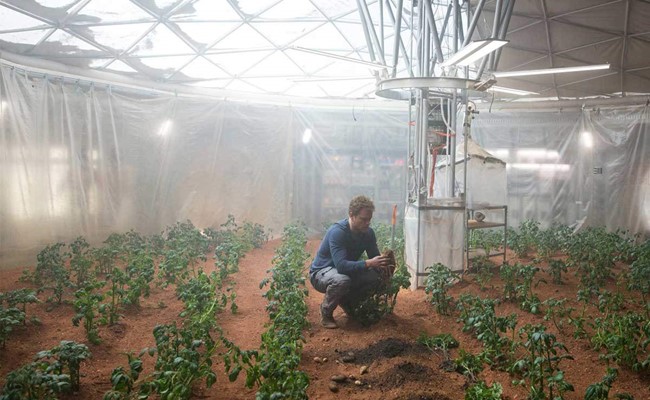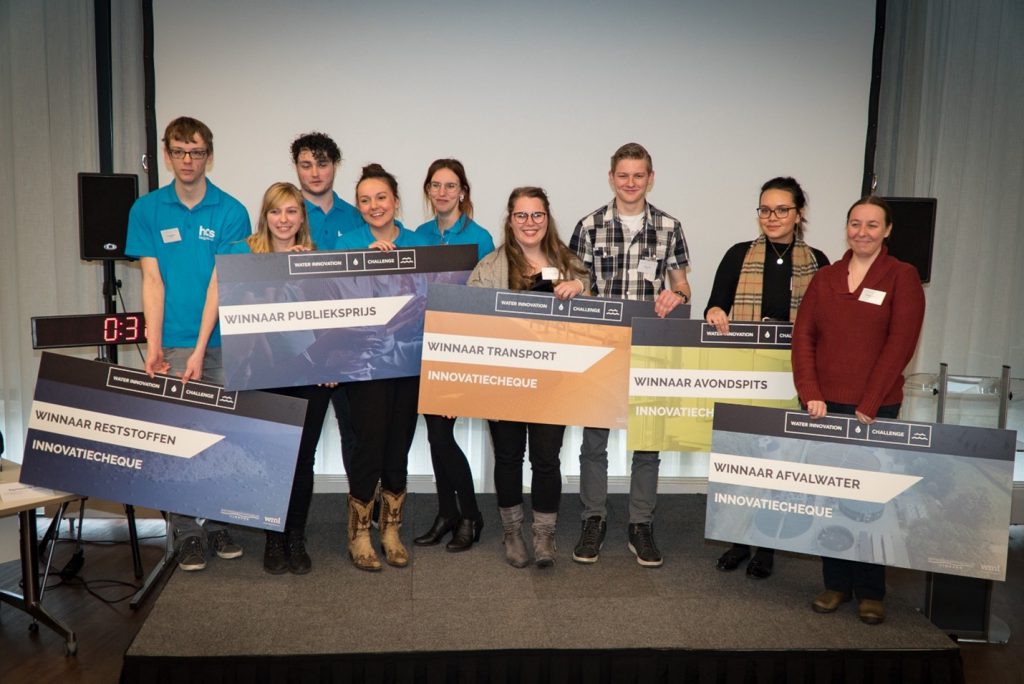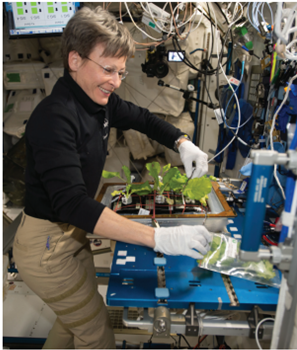Is there (rural) life on Mars?
Discover the research exploring how we could grow potatoes in space
In March 2020, we tweeted about the concept of rural life on Mars, only to learn that researchers at the University of Reading, our parent organisation, are exploring this very subject. In this blog, hear from UoR researcher Tamisan Latherow as she reflects on her research journey so far: from watching Matt Damon in 2015’s The Martian, to studies crossing the Netherlands, France, England, and maybe even outer space some day. Who knows. Enjoy!
Encountering Martian rural life
In 2015, I was sitting on my living room couch, watching Matt Damon play stranded astronaut-and-botanist Mark Watney in The Martian. I watched as Damon’s protagonist slowly ran out of food and then had the brilliant idea to try growing his own potatoes. Something he could do, the film declared, because he was a botanist trained to do just that.
However, Mars is not like Earth. Besides the whole lack of oxygen issue, there’s also a lack of proper soil. The regolith (Martian soil) is mostly crushed basalt rocks with a few trace elements but no organic matter (e.g. fertiliser) that could feed crops. To solve this, Damon’s perspicacious protagonist cracks open the crew’s dehydrated poop packets, and uses them to make fertiliser of his own. He figures out a way of creating a watering system, and eventually grows potatoes to supplement his food resources.

That is, until the airlock rips and the freezing Martian atmosphere destroys everything, killing both the good microbes he managed to grow and Damon’s potatoes.
This is where I paused the movie and thought: ‘I can fix that’.
Warmth, nutrients, oxygen
Arrogant? Perhaps. True? Eh …sort of.
Back then, I had a working knowledge of hydroponics (the science of growing plants without soil) and a better-than-working knowledge of growing food in sandy, nutrient-deficient soil.
At the time, I was living on Florida’s Gulf Coast and most of our ‘soil’ was really just beach sand. In that sand, I’d (also) grown potatoes, so I knew some of what Damon’s protagonist was up against. But while my average summer temperatures were in the mid-to-high 30C range, Damon’s character was facing down an average of -60C. A tiny discrepancy I wasn’t sure how to handle.
Two years later, I found myself living in the Netherlands and attending Wageningen University & Research working on my first Masters in Organic Agriculture. I was learning a lot about policies and regulations in Europe, but the little idea in the back of my head about Martian potatoes persisted. Then I found out one of the researchers at the University was doing just that, growing food in Martian simulated soil. Ecologist and exobiologist, Dr. Wieger Wamelink had been working on the problem since 2013 and I had the ability to literally go down the hall and chat with him. Our discussions helped me to refine the idea a bit, but I wasn’t focused on it; it was still just an idea. Then I got the chance to work with the Limburg Water Board and Waterschapsbedrijf Limburg in Roermond, Netherlands on a way to reduce or reuse municipal wastewater for agricultural purposes and that little idea gained a stronger footing. What if, I thought, we could use biological additives to make the water clean enough to use on fields?

Slide forward another year and I was in France doing a second Masters in Agroecology at ISARA (Institut Superieur d’Agriculture Rhone Alpes). Standing in the foyer, staring at the aquaponics system with its flashing silver carp, I was reminded of my hydroponics system back in Florida and the drip irrigation system at Wageningen in Dr. Wamelink’s glass house, when one of my professors walked up to me. ‘The right item at the right time’, they told me. That’s the key to aquaponics, and the key to precision agriculture in general, but I was there to learn about agroecology: how nature and agriculture can either work together or against each other. At that moment, I found myself contemplating the question that had been in my head ever since The Martian. Could I find a specific, ecologically-sound answer to the specific issues that Damon faced: the lack of warmth, nutrients, and oxygen?
Heading to Reading
It would take another two years before actual progress was made. After graduating from both Wageningen and ISARA, I found myself at the University of Reading for a PhD in Agricultural, Environmental and Food Economics, talking to my supervisors about how weird I am because I love the historical and futuristic aspects of agriculture. How I’d love to take the organic knowledge our grandparents and great-grandparents had before chemicals were introduced, and combine them with high-tech aspects of contemporary computers and AI to solve the problems of off-world habitation. Or at the very least, some of the issues for urban agriculture. It isn’t what I’m here to do for my PhD, but it is a cool side project, which I jokingly called my ‘potatoes on Mars’ project.
However, my supervisors weren’t laughing. They were giving it serious thought and said: ‘Well, why not do that too? You’ve got the time, we’ve got the resources. Go find someone who will help you out’.

The idea had become real and solid. After gaining approval from the University’s School of Biological Sciences, and my own School of Agriculture, Policy and Development, I gained a lab supervisor, a cohort in crime in the form of another PhD candidate, and access to several labs. I just needed to turn the idea into practical paperwork and start the testing. Which is when COVID-19 hit and everything changed. The time away from the lab was frustrating, I’m not going to lie, but sitting in my room gave me the time to do more research, test out some ideas, and ultimately create a better project proposal.
Today, the labs are getting back underway and in a few months I should have my first set of results. My little idea about ‘fixing’ Damon’s Martian farm is now a multi-phase project that could change how we deal with contaminants in water and soil here on Earth, as well as grow potatoes on Mars.
How it works
The principles in my idea remain simple. Why reinvent the wheel when you can find something here on Earth that nature has already engineered to do exactly what you’re looking for?
Step 1: Identify the issues
For Mars, these are the cold, the lack of oxygen and nutrients, microgravity, heavy metals and dangerous perchlorate salts. A few more items than I started with and a few more than author Andy Weir knew about when he wrote the book that influenced The Martian, but still manageable.
Step 2: Find a bacterium that could mitigate the main issues
I’ve chosen an anaerobic bacterium that doesn’t need oxygen to survive and is a known perchlorate remover. It’s also got a few cool talents like the ability to use a variety of different organic and inorganic electron acceptors, meaning it can survive in a host of different environments and a large number of nif genes. Nif gens are a type of gene required for bacterial nitrogen fixation, which is necessary for good soil.
Step 3: Test to see what temperatures and metal and salt levels the bacterium survives at
This is the time-consuming part, because one item might affect another, so we need to test the same thing over and over again, adding and subtracting different elements. The benefit is that at the end of the testing, we should be able to say that bacterium x removes y amounts of perchlorates and z amounts of heavy metals in this temperature range. Which is something anyone using it will need to know.
Step 4: Use the optimal range from step 3 to grow potatoes in Martian-simulated soil (aka regolith)
I’ve chosen two varieties of potatoes from Chile and Peru’s Atacama desert, a region used to simulate Mars due to its high-altitude, high-salinity conditions.
Both varieties are low, ground-hugging and wild cultivars (cultivated varieties), which I hope solves the evapotranspiration issue caused by microgravity. Let me explain. Plants grown in microgravity have a tendency to become tall and spindly, making movement of fluid difficult (as opposed to plants with short and thick stems that enable water and nutrients to move easily). By choosing a variety that naturally doesn’t grow tall, I’m hoping that issue can be mitigated. However, wild cultivars are naturally smaller than modern varieties, which means less food is grown in the same amount of space. Whilst the two varieties I’ve chosen do have this problem, the flip-side is that they have a high sugar and starch content, which gives the crop multiple potential end products. One example is research into using potato peels for rocket fuel.
Step 5: Put it all together in a simulated Martian environment
This is the hardest part, because true simulated conditions require the gravity and atmosphere to be the same as on another planet. And we’re still working on this. There are smaller testing sites, like CubeSats, a type of miniaturised satellite for space research that is made up of multiple cubic modules of 10 cm × 10 cm × 10 cm, but as you can imagine, growing anything in a 10cm cube is a little difficult. NASA and other space agencies have slightly larger units like the VEGGIE system on the International Space Station, but even here the production is mostly limited to greens and above-ground crops like tomatoes and strawberries, or quick, small root crops like radishes. Not potatoes, which require a lot of space per plant both above and below ground.
Back down to Earth

Our goal with this research is to take the next step and find an agroecological way to not only grow food on Mars, but to grow food anywhere, regardless of local conditions, or maybe more accurately, in conjunction with local conditions. We know potatoes can be grown on Earth in regolith, since the International Potato Center did just that back in 2016. And with Dr. Wamelink’s research we have been given even more clues as to how we could feed ourselves from hyper-saline soils.
Ultimately, we’re not trying to change the world; we’re just trying to live within the boundaries it is setting and hopefully solve a few problems along the way.
Tamisan Latherow is a second year PhD Candidate in the School of Agriculture, Policy and Development at the University of Reading researching women’s participation in English agriculture (1920-1960) in conjunction with The Museum of English Rural Life and agroecological farming systems for Martian food production with the School of Biological Sciences.
For more work by Tamisan, take a look at her previous blog for The MERL: breaking the colour bar.
